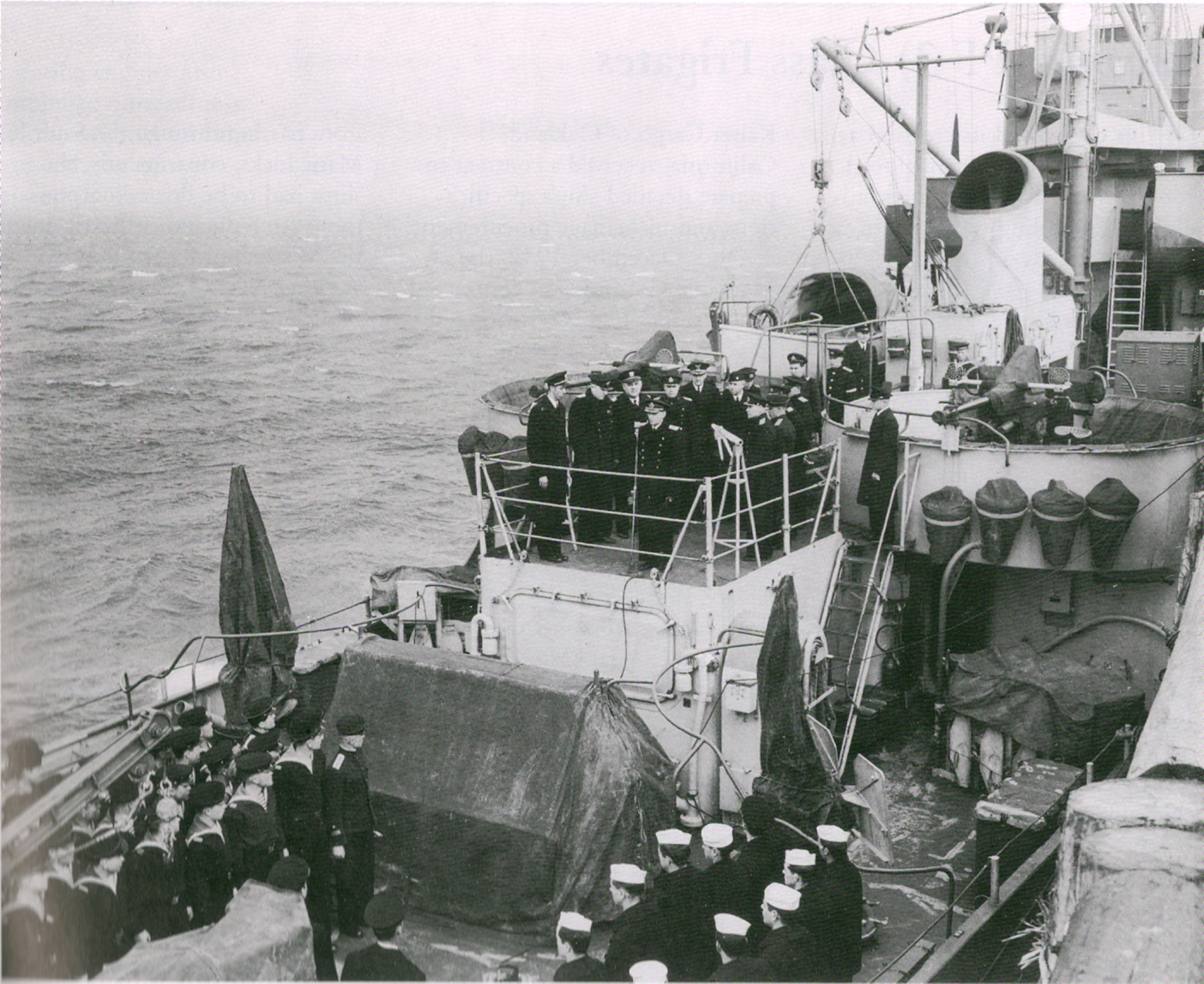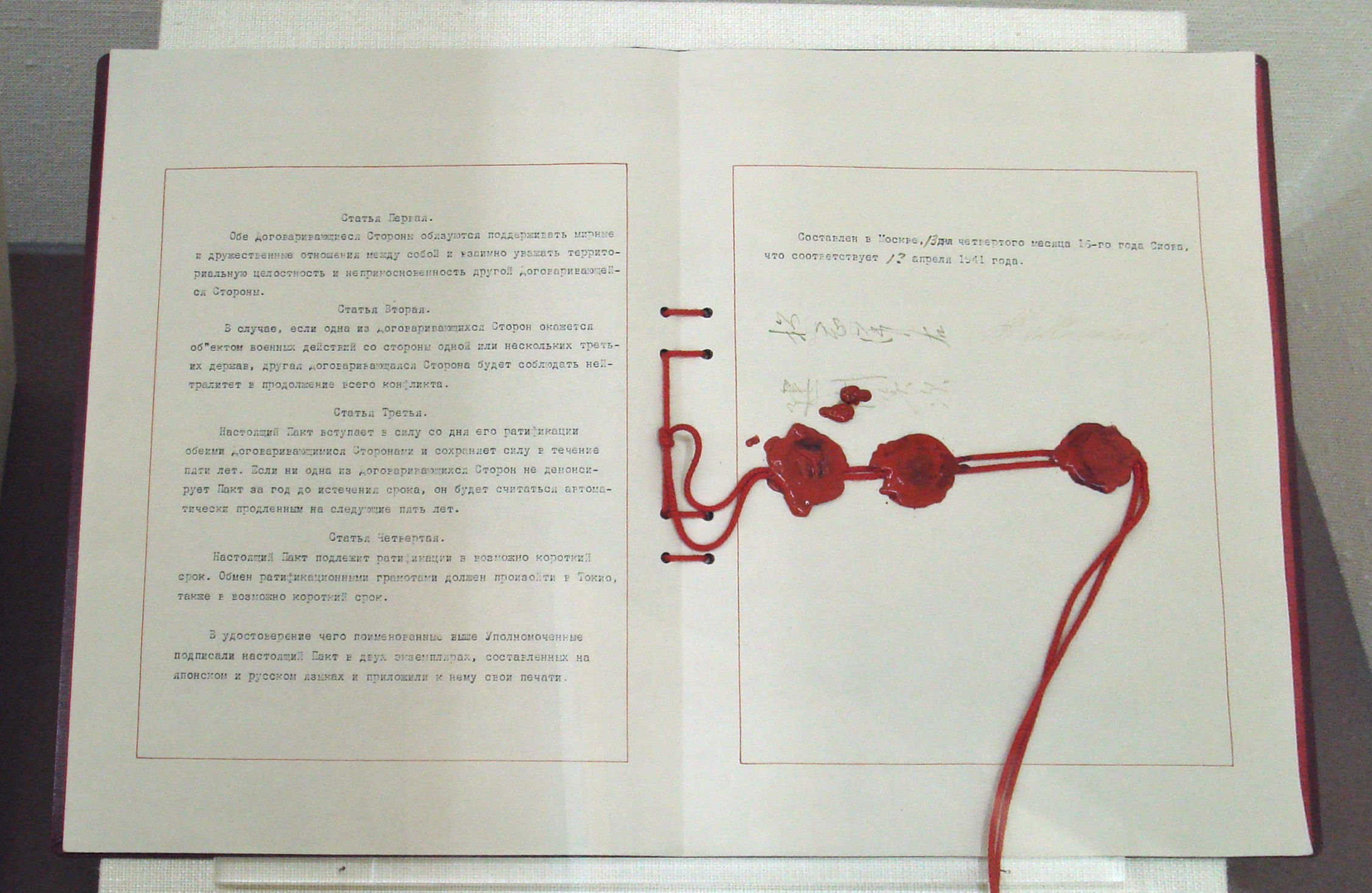|
Project Hula
Project Hula was a secret program during World War II in which the United States transferred naval vessels to the Soviet Union in anticipation of the Soviets eventually joining the war against Japan, specifically in preparation for planned Soviet invasions of southern Sakhalin and the Kuril Islands. Based at Cold Bay in the Territory of Alaska, the project was active during the spring and summer of 1945. It was the largest and most ambitious transfer program of World War II, it included 149 ships delivered (of 180 expected, returned until 1955) and 12,000 personnel trained between 16 April and 4 September 1945 (well after the armistice of 15 August and the surrender of Japan on 2 September) and the US-handed then-Soviet ships took part in the last war operations of 5 September in Manchukuo, northern Korea, the Japanese south of Sakhalin Island, and the Kuril Islands. Origins of Project Hula The Russian Empire and Japan had previously fought the Russo-Japanese War in 1904–1 ... [...More Info...] [...Related Items...] OR: [Wikipedia] [Google] [Baidu] |
Pacific War
The Pacific War, sometimes called the Asia–Pacific War or the Pacific Theatre, was the Theater (warfare), theatre of World War II fought between the Empire of Japan and the Allies of World War II, Allies in East Asia, East and Southeast Asia, the Pacific Ocean, Pacific and Indian Oceans, and Oceania. It was geographically the largest theatre of the war, including the Pacific Ocean theater of World War II, Pacific Ocean theatre, the South West Pacific theater of World War II, South West Pacific theatre, the Second Sino-Japanese War, and the brief Soviet–Japanese War, and included some of the Largest naval battle in history, largest naval battles in history. War between Japan and the Republic of China (1912–1949), Republic of China had begun in 1937, with hostilities dating back to Japanese invasion of Manchuria, Japan's invasion of Manchuria in 1931, but the Pacific War is more widely accepted to have started in 1941, when the United States and United Kingdom entered the ... [...More Info...] [...Related Items...] OR: [Wikipedia] [Google] [Baidu] |
Russian Civil War
The Russian Civil War () was a multi-party civil war in the former Russian Empire sparked by the 1917 overthrowing of the Russian Provisional Government in the October Revolution, as many factions vied to determine Russia's political future. It resulted in the formation of the Russian Soviet Federative Socialist Republic, Russian Socialist Federative Soviet Republic and later the Soviet Union in most of its territory. Its finale marked the end of the Russian Revolution, which was one of the key events of the 20th century. The List of Russian monarchs, Russian monarchy ended with the abdication of Nicholas II, Tsar Nicholas II during the February Revolution, and Russia was in a state of political flux. A tense summer culminated in the October Revolution, where the Bolsheviks overthrew the Russian Provisional Government, provisional government of the new Russian Republic. Bolshevik seizure of power was not universally accepted, and the country descended into a conflict which beca ... [...More Info...] [...Related Items...] OR: [Wikipedia] [Google] [Baidu] |
Allies Of World War II
The Allies, formally referred to as the United Nations from 1942, were an international Coalition#Military, military coalition formed during World War II (1939–1945) to oppose the Axis powers. Its principal members were the "Four Policemen, Big Four" – the United Kingdom, United States, Soviet Union, and Republic of China (1912–1949), China. Membership in the Allies varied during the course of the war. When the conflict broke out on 1 September 1939, the Allied coalition consisted of the United Kingdom, French Third Republic, France, and Second Polish Republic, Poland, as well as their respective Dependent territory, dependencies, such as British Raj, British India. They were joined by the independent dominions of the British Commonwealth: Canada, Australia, Dominion of New Zealand, New Zealand and Union of South Africa, South Africa. Consequently, the initial alliance resembled Allies of World War I, that of the First World War. As Axis forces began German invasion of ... [...More Info...] [...Related Items...] OR: [Wikipedia] [Google] [Baidu] |
Operation Barbarossa
Operation Barbarossa was the invasion of the Soviet Union by Nazi Germany and several of its European Axis allies starting on Sunday, 22 June 1941, during World War II. More than 3.8 million Axis troops invaded the western Soviet Union along a front, with the main goal of capturing territory up to a line between Arkhangelsk and Astrakhan, known as the A-A line. The attack became the largest and costliest military offensive in history, with around 10 million combatants taking part in the opening phase and over 8 million casualties by the end of the operation on 5 December 1941. It marked a major escalation of World War II, opened the Eastern Front—the largest and deadliest land war in history—and brought the Soviet Union into the Allied powers. The operation, code-named after the Holy Roman Emperor Frederick Barbarossa ("red beard"), put into action Nazi Germany's ideological goals of eradicating communism and conquering the western Soviet Union to repopulate it w ... [...More Info...] [...Related Items...] OR: [Wikipedia] [Google] [Baidu] |
Soviet–Japanese Neutrality Pact
The , also known as the , was a non-aggression pact between the Soviet Union and the Empire of Japan signed on April 13, 1941, two years after the conclusion of the Soviet-Japanese Border War. The agreement meant that for most of World War II, the two nations fought against each other's allies but not against each other. In 1945, late in the war, the Soviets scrapped the pact and joined the Allied campaign against Japan. Background After the Fall of France and then the expansion of the Axis Powers, the Soviet Union wished to mend its diplomatic relations in the Far East to safeguard its eastern border and to concentrate on the European Theatre of World War II. On the other hand, the Empire of Japan was bogged down in a seemingly-interminable war against China and had rapidly-deteriorating diplomatic relations with the United States. Those factors made the Japanese seek an accommodation with the Soviet Union to improve its international standing and to secure the northern bor ... [...More Info...] [...Related Items...] OR: [Wikipedia] [Google] [Baidu] |
Molotov–Ribbentrop Pact
The Molotov–Ribbentrop Pact, officially the Treaty of Non-Aggression between Germany and the Union of Soviet Socialist Republics, and also known as the Hitler–Stalin Pact and the Nazi–Soviet Pact, was a non-aggression pact between Nazi Germany and the Soviet Union, with a secret protocol establishing Soviet and German spheres of influence across Eastern Europe. The pact was signed in Moscow on 24 August 1939 (backdated 23 August 1939) by Soviet Foreign Minister Vyacheslav Molotov and German Foreign Minister Joachim von Ribbentrop. The treaty was the culmination of negotiations around Nazi–Soviet economic relations (1934–1941)#1938–1939 deal discussions, the 1938–1939 deal discussions, after tripartite discussions between the Soviet Union, the United Kingdom and France had broken down. The Soviet-German pact committed both sides to neither aid nor ally itself with an enemy of the other for the following 10 years. Under the Secret Protocol, Second Polish Republic, ... [...More Info...] [...Related Items...] OR: [Wikipedia] [Google] [Baidu] |
Republic Of China (1912–1949)
The Republic of China (ROC) began on 1 January 1912 as a sovereign state in mainland China following the 1911 Revolution, which overthrew the Manchu people, Manchu-led Qing dynasty and ended China's imperial China, imperial history. From 1927, the Kuomintang (KMT) Northern expedition, reunified the country and initially ruled it as a one-party state with Nanjing as the national capital. In 1949, Nationalist government, the KMT-led government was defeated in the Chinese Civil War and lost control of the mainland to the Chinese Communist Party (CCP). The CCP Proclamation of the People's Republic of China, established the People's Republic of China (PRC) while the ROC was forced to Retreat of the government of the Republic of China to Taiwan, retreat to Taiwan; the ROC retains control over the Taiwan Area, and political status of Taiwan, its political status remains disputed. The ROC is recorded as a founding member of both the League of Nations and the United Nations, and previous ... [...More Info...] [...Related Items...] OR: [Wikipedia] [Google] [Baidu] |
Second Sino-Japanese War
The Second Sino-Japanese War was fought between the Republic of China (1912–1949), Republic of China and the Empire of Japan between 1937 and 1945, following a period of war localized to Manchuria that started in 1931. It is considered part of World War II, and often regarded as the beginning of World WarII in Asia. It was the largest Asian war in the 20th century and has been described as The Asian Holocaust, in reference to the scale of Japanese war crimes against Chinese civilians. It is known in China as the War of Resistance against Japanese Aggression. On 18 September 1931, the Japanese staged the Mukden incident, a false flag event fabricated to justify their Japanese invasion of Manchuria, invasion of Manchuria and establishment of the puppet state of Manchukuo. This is sometimes marked as the beginning of the war. From 1931 to 1937, China and Japan engaged in skirmishes, including January 28 incident, in Shanghai and in Northern China. Chinese Nationalist and C ... [...More Info...] [...Related Items...] OR: [Wikipedia] [Google] [Baidu] |
Battles Of Khalkhin Gol
The Battles of Khalkhin Gol (; ) were the decisive engagements of the undeclared Soviet–Japanese border conflicts involving the Soviet Union, Mongolian People's Republic, Mongolia, Empire of Japan, Japan and Manchukuo in 1939. The conflict was named after the river Khalkhyn Gol, Khalkhin Gol, which passes through the battlefield. In Japan, the decisive battle of the conflict is known as the after Nomonhan Burd Obo, an Ovoo, ''obo'', a cairn set as a border marker in the Yongzheng period of the Qing dynasty. The battles resulted in the defeat of the Japanese Sixth Army. Background After the Japanese invasion of Manchuria, Japanese occupation of Manchuria in 1931, Japan turned its military interests to Soviet territories that bordered those areas. Meanwhile, the Soviet Union and the People's Republic of Mongolia signed an Soviet-Mongolian Mutual Assistance Pact, Mutual Assistance Pact in March 1936, allowing the former to send troops to Mongolia. In the same year, Japan signed ... [...More Info...] [...Related Items...] OR: [Wikipedia] [Google] [Baidu] |
Amur River
The Amur River () or Heilong River ( zh, s=黑龙江) is a perennial river in Northeast Asia, forming the natural border between the Russian Far East and Northeast China (historically the Outer and Inner Manchuria). The Amur ''proper'' is long, and has a drainage basin of .Амур (река в Азии) If including its main stem , the Argun, the Am ... [...More Info...] [...Related Items...] OR: [Wikipedia] [Google] [Baidu] |
Kanchatzu Island
The occurred in late June 1937 on the Amur River, at the Soviet–Manchukuo border. Background Kanchazu (also spelled "Kanchatzu" ) Island is an unoccupied island that is located in the center of the Amur River. The island acted as the official border between Manchukuo and the Soviet Union. Events On June 19, two Soviet motorboats crossed the center line of the river, unloaded 20 troops, and occupied Kanchazu Island. The next day, 17 Manchukuo police and soldiers were sent to investigate the border intrusion. Soviet troops, numbering around 40 men, were now entrenched on Kanchazu Island and building fortifications. The Manchurian patrol was driven back by Soviet soldiers. On 29 June, a planned operation by the Imperial Japanese Army's 1st Division headquarters was approved for a night attack on Kanchazu for the expulsion of Soviet troops from the island. The operation was ultimately delayed and rescheduled for the next day. On the morning of June 30, Japanese soldiers fro ... [...More Info...] [...Related Items...] OR: [Wikipedia] [Google] [Baidu] |
Manchuria
Manchuria is a historical region in northeast Asia encompassing the entirety of present-day northeast China and parts of the modern-day Russian Far East south of the Uda (Khabarovsk Krai), Uda River and the Tukuringra-Dzhagdy Ranges. The exact geographical extent varies depending on the definition: in the narrow sense, the area constituted by three Chinese provinces of Heilongjiang, Jilin, and Liaoning as well as the eastern Inner Mongolian prefectures of China, prefectures of Hulunbuir, Hinggan League, Hinggan, Tongliao, and Chifeng; in a broader sense, historical Manchuria includes those regions plus the Amur river basin, parts of which were ceded to the Russian Empire by the Manchu-led Qing dynasty during the Amur Annexation of 1858–1860. The parts of Manchuria ceded to Russia are collectively known as Outer Manchuria or Russian Manchuria, which include present-day Amur Oblast, Primorsky Krai, the Jewish Autonomous Oblast, the southern part of Khabarovsk Krai, and the easter ... [...More Info...] [...Related Items...] OR: [Wikipedia] [Google] [Baidu] |








